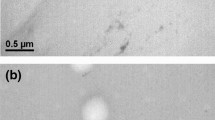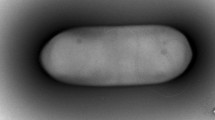Abstract
Two novel strains, BT213T and BT327T, were isolated from the soil collected in Uijeongbu city, Korea. Cells of strains were Gram negative, aerobic, and non-motile. Phylogenetic analysis based on 16S rRNA gene sequences showed that strains BT213T and BT327T formed two distinct lineages within the family Hymenobacteraceae (order Cytophagales, class Cytophagia). Phylogenetic analysis based on 16S rRNA gene sequences indicated that strain BT213T and BT327T belonged to the genus Pontibacter. Strain BT213T showed the highest similarities of 97.8% with Pontibacter deserti JC215T. Strain BT327T showed the highest sequence similarity of 96.5% with Pontibacter mucosus PB3T. Optimal growth occurred at 25 °C, pH 7, and in the absence of NaCl. The major cellular fatty acid of strains BT213T and BT327T were iso-C15:0 and summed feature 4 (iso-C17:1 I/anteiso-C17:1 B). Strains BT213T and BT327T had MK-7 as major respiratory quinone and phosphatidylethanolamine as major polar lipids. The genome size of strains BT213T and BT327T were 4,072,018 bp and 4,314,171 bp, respectively. The genomic G + C mol% of strains BT213T and BT327T are 45.6% and 46.1%, respectively. Based on biochemical, chemotaxonomic, and phylogenetic analysis, two novel species Pontibacter fetidus BT213T (KCTC 72345T = NBRC 114379T) and Pontibacter burrus BT327T (KCTC 72412T = NBRC 114376T) are proposed as type strains.

Similar content being viewed by others
Change history
23 February 2021
A Correction to this paper has been published: https://doi.org/10.1007/s00203-020-02132-2
References
Felsenstein J (1981) Evolutionary trees from DNA sequences: a maximum likelihood approach. J Mol Evol 17:368–376
Felsenstein J (1985) Confidence limits on phylogenies: an approach using the bootstrap. Evolution 39:783–791
Fitch WM (1971) Toward defining the course of evolution: minimum change for a specific tree topology. Syst Zool 20:406–416
Hiraishi A, Ueda Y, Ishihara J, Mori T (1996) Comparative lipoquinone analysis of influent sewage and activated sludge by high–performance liquid chromatography and photodiode array detection. J Gen Appl Microbiol 42:457–469
Kimura M (1980) A simple method for estimating evolutionary rates of base substitutions through comparative studies of nucleotide sequences. J Mol Evol 16:111–120
Komagata K, Suzuki K (1988) 4 Lipid and cell–wall analysis in bacterial systematics. Method Microbiol 19:161–207
Kumar S, Stecher G, Li M, Knyaz C, Tamura K (2018) MEGA X: molecular evolutionary genetics analysis across computing platforms. Mol Biol Evol 35:1547–1549
Lee I, Kim YO, Park CJ (2016) OrthoANI: an improved algorithm and software for calculating average nucleotide identity. Int J Syst Evol Microbiol 66:1100–1103
Minnikin DE, O’donnell AG, Goodfellow M, Alderson G, Athalye M, Schaal A, Parlett JH (1984) An integrated procedure for the extraction of bacterial isoprenoid quinones and polar lipids. J Microbiol Method 2:233–241
Nayyar N, Kohli P, Mahato NK, Lal R (2016) Pontibacter mucosus sp. nov., isolated from hexachlorocyclohexane–contaminated pond sediment. Int J Syst Evol Microbiol 66:2234–2322
Nedashkovskaya OI, Kim SB, Suzuki M, Shevchenko LS, Lee MS, Lee KH, Park MS, Frolova GM, Oh HW, Bae KS, Park HY, Mikhailov VV (2005) Pontibacter actiniarum gen. nov., sp nov., a novel member of the phylum ‘Bacteroidetes’, and proposal of Reichenbachiella gen. nov as a replacement for the illegitimate prokaryotic generic name Reichenbachia Nedashkovskaya et al. 2003. Int J Syst Evolut Microbiol 55:2583–2588
Saitou N, Nei M (1987) The neighbor–joining method: a new method for reconstructing phylogenetic trees. Mol Biol Evol 4:406–425
Sasser M (1990) Identification of bacteria by gas chromatography of cellular fatty acids. MIDI Technical Note 101. MIDI Inc, Newark
Subhash Y, Sasikala C, Ramana CV (2014) Pontibacter ruber sp. nov. and Pontibacter deserti sp. nov., isolated from the desert. Int J Syst Evol Microbiol 64:1006–1011
Wang Y, Zhang K, Cai F, Zhang L, Tang Y, Dai J, Fang C (2010) Pontibacter xinjiangensis sp. nov., in the phylum ‘Bacteroidetes’, and reclassification of [Effluviibacter] roseus as Pontibacter roseus comb. nov. Int J Syst Evol Microbiol 60:99–103
Weisburg WG, Barns SM, Pelletier DA, Lane DJ (1991) 16S ribosomal DNA amplification for phylogenetic study. J Bacteriol 173:697–703
Wu Y, Zhou P, Jian S, Liu Z, Wang C, Oren A, Xu X (2016) Pontibacter amylolyticus sp. nov., isolated from a deep–sea sediment hydrothermal vent field. Int J Syst Evol Microbiol 66:1760–1767
Xu M, Wang Y, Dai J, Jiang F, Rahman E, Peng F, Fang C (2012) Pontibacter populi sp. nov., isolated from the soil of a Euphrates poplar (Populus euphratica) forest. Int J Syst Evol Microbiol 62:665–670
Xu L, Zeng XC, Nie Y, Luo X, Zhou E, Zhou L, Pan Y, Li W (2014) Pontibacter diazotrophicus sp. Nov., a novel nitrogen-fixing bacterium of the family Cytophagaceae. PLoS ONE 9:e92294
Zhou Y, Wang X, Liu H, Zhang K, Zhang Y, Lai R, Li W (2007) Pontibacter akesuensis sp. nov., isolated from a desert soil in China. Int J Syst Evol Microbiol 57:321–325
Acknowledgements
This work was supported by a research grant from Seoul Women’s University (2020) and by a grant from the National Institute of Biological Resources (NIBR), funded by the Ministry of Environment (MOE) of the Republic of Korea (NIBR201902203). We are grateful to Dr. Aharon Oren (The Hebrew University of Jerusalem, Israel) for helping with the etymology.
Author information
Authors and Affiliations
Corresponding authors
Additional information
Communicated by Erko stackebrandt.
Publisher's Note
Springer Nature remains neutral with regard to jurisdictional claims in published maps and institutional affiliations.
The original online version of this article was revised due to incorrect funding information.
Electronic supplementary material
Below is the link to the electronic supplementary material.
Rights and permissions
About this article
Cite this article
Park, Y., Maeng, S., Han, J.H. et al. Pontibacter fetidus sp. nov. and Pontibacter burrus sp. nov., isolated from the soil. Arch Microbiol 203, 771–775 (2021). https://doi.org/10.1007/s00203-020-02070-z
Received:
Revised:
Accepted:
Published:
Issue Date:
DOI: https://doi.org/10.1007/s00203-020-02070-z




